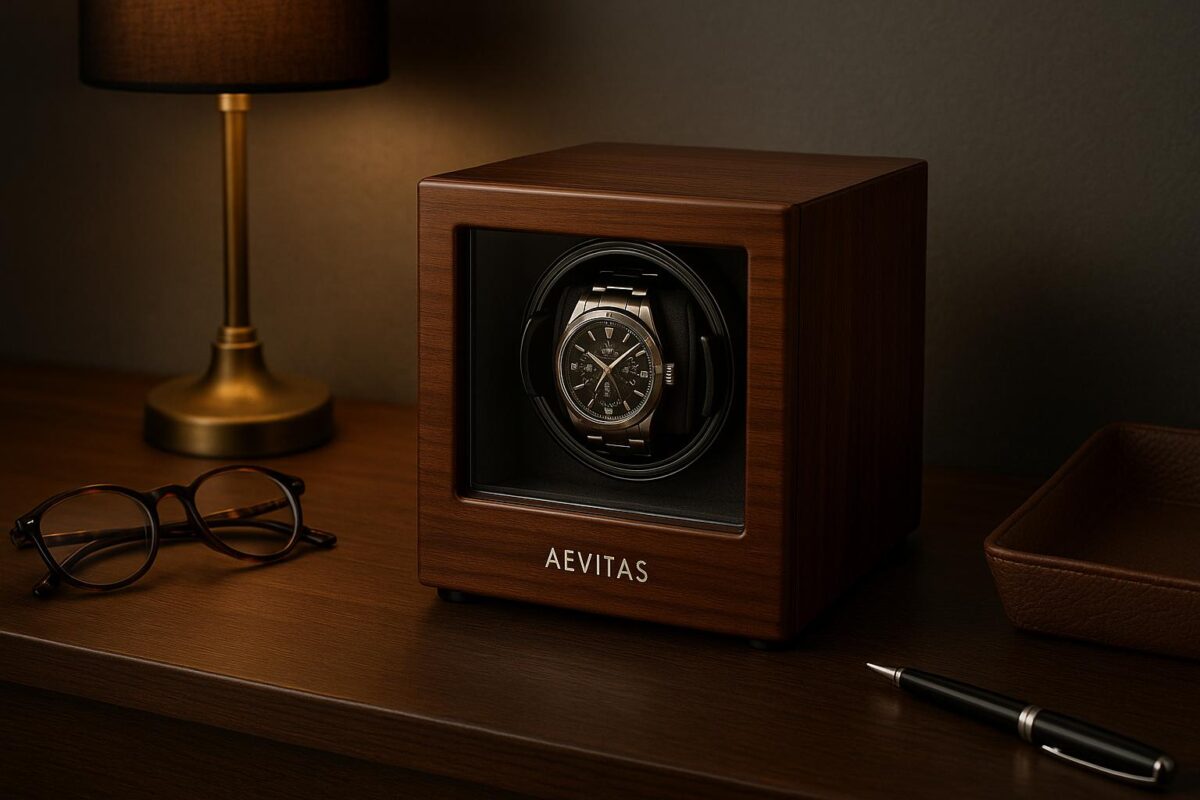Why Watch Winders Matter: The Complete Guide to Keeping Your Automatic Timepiece Ticking

If you’re a proud owner of an automatic watch, you’ve probably heard the term watch winders tossed around in conversations. But what exactly are they? Do you really need one? And how do they work?
In this comprehensive guide, we’ll dive into everything you need to know about watch winders—without the confusing jargon or sales pressure. Whether you’re a beginner or a long-time collector, this article will give you the clarity you need to make an informed decision.
What Is a Watch Winder?
A watch winder is a device designed to keep automatic (also known as self-winding) watches running when they’re not being worn. Automatic watches rely on the movement of your wrist to stay wound. If you leave them idle for too long, they stop ticking.
A watch winder mimics this wrist motion by rotating the watch at regular intervals, ensuring it stays operational even while it’s sitting in your drawer or display case.
How Does It Work?
The principle is simple: the rotor inside an automatic watch turns when the watch moves. A watch winder uses a motor to rotate your watch in a circular motion, keeping that rotor in action. Depending on the model, it may:
- Rotate clockwise, counter-clockwise, or alternate between both
- Operate at set intervals to prevent overwinding
- Allow adjustable turns per day (TPD)
Most modern watch winders are quiet, efficient, and built to handle a variety of watch sizes and styles.
Why Use a Watch Winder?
Here’s where opinions start to vary. Some collectors swear by them, while others argue they’re unnecessary. The truth lies somewhere in between. Here are some solid reasons why people use watch winders:
1. Convenience
You won’t need to reset the time, date, moon phase, or other complications every time you wear your watch. This is especially helpful for watches with:
- Perpetual calendars
- Moon phase displays
- Multiple time zones
2. Longevity
Keeping your watch running helps circulate its lubricants evenly. Over time, stagnant lubricants can congeal, leading to wear and tear when the watch is restarted.
3. Display
Many watch winders double as elegant display cases, showcasing your collection while keeping your timepieces ready for action.
4. Collection Management
If you own several automatic watches, wearing each one regularly can be challenging. A winder keeps them all ticking without daily attention.
Do You Really Need One?
Not every automatic watch owner needs a watch winder, but there are scenarios where it becomes incredibly useful:
- You rotate between multiple watches
- Your watch has complex features that are tedious to reset
- You appreciate convenience and time-saving tools
On the other hand, if you wear your automatic watch every day, a winder might not offer much benefit. Letting your watch stop occasionally isn’t harmful—it’s all about preference and lifestyle.
Types of Watch Winders
Not all watch winders are created equal. Here’s a breakdown of the most common types to help you choose the one that suits your needs:
1. Single Watch Winders
Perfect for individuals with one prized automatic watch. These are compact and cost-effective.
2. Multi-Watch Winders
Designed for collectors, these can hold two to twenty watches (or more). They often come with programmable settings for each watch.
3. Programmable Winders
Offer the flexibility to set direction, speed, and duration—ideal for owners of watches with specific winding requirements.
4. Battery-Powered vs. AC-Powered
Some are portable and battery-operated, while others require a wall outlet. Choose based on where you’ll place your winder.
Things to Consider Before Buying
Before investing in a watch winder, take a moment to think through the following:
1. Noise Level
Cheaper models may use loud motors, which can be annoying, especially if placed in a bedroom.
2. Build Quality
Look for solid materials, quality craftsmanship, and secure cushioning to protect your timepieces.
3. Rotation Settings
Each watch has different winding needs. Check your watch’s requirements and make sure the winder can accommodate them.
4. Power Options
Choose between AC adapters, batteries, or dual-power models for more flexibility.
5. Security Features
Some high-end winders come with lockable doors or covers for added protection and dust resistance.
Benefits of Regular Winding
Even if a watch winder isn’t essential, regular winding does have its benefits:
- Preserves mechanical health: Ensures lubricants don’t dry out.
- Maintains accuracy: A watch that runs consistently tends to stay more accurate.
- Reduces manual resets: Particularly useful for watches with complex features.
Letting a watch stop isn’t damaging, but frequent starts and stops can, over time, place stress on the movement.
Interesting Facts and Figures
- The average automatic watch requires 650 to 1800 turns per day (TPD).
- Lubricants inside a mechanical watch are designed to stay fluid through regular motion.
- According to some horologists, a properly maintained automatic watch can last 50+ years.
- Surveys suggest 35–40% of automatic watch owners use watch winders regularly.
How to Maintain Your Watch Winder
Just like your watch, your watch winder needs care to function at its best:
- Keep it clean: Dust can accumulate and interfere with moving parts.
- Avoid direct sunlight: This can degrade materials and overheat the motor.
- Check power regularly: Ensure the motor is running smoothly without odd noises.
- Use as intended: Don’t overload it or use it for manual watches.
Is It Worth the Investment?
A good watch winder is a long-term investment for serious collectors. The key is balance: don’t splurge unnecessarily, but don’t go too cheap either. Look for a model that meets your collection size, winding needs, and budget.
For those who wear their automatic watch occasionally or own several pieces, a watch winder offers clear value in terms of convenience, preservation, and peace of mind.
Conclusion
Watch winders may seem like a luxury, but for the right person, they’re a smart and practical addition to any watch collection. They help your automatic timepieces stay accurate, lubricated, and ready to wear whenever you are.
While not a must-have for everyone, they offer undeniable benefits—especially if you cherish your watches and want to protect your investment. Like any good tool, a watch winder is there to make life a little easier—and your collection a little more complete.








